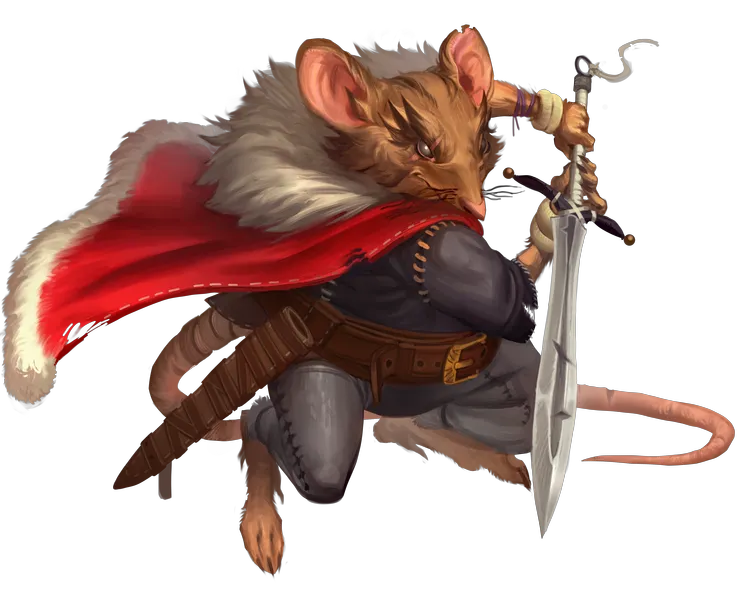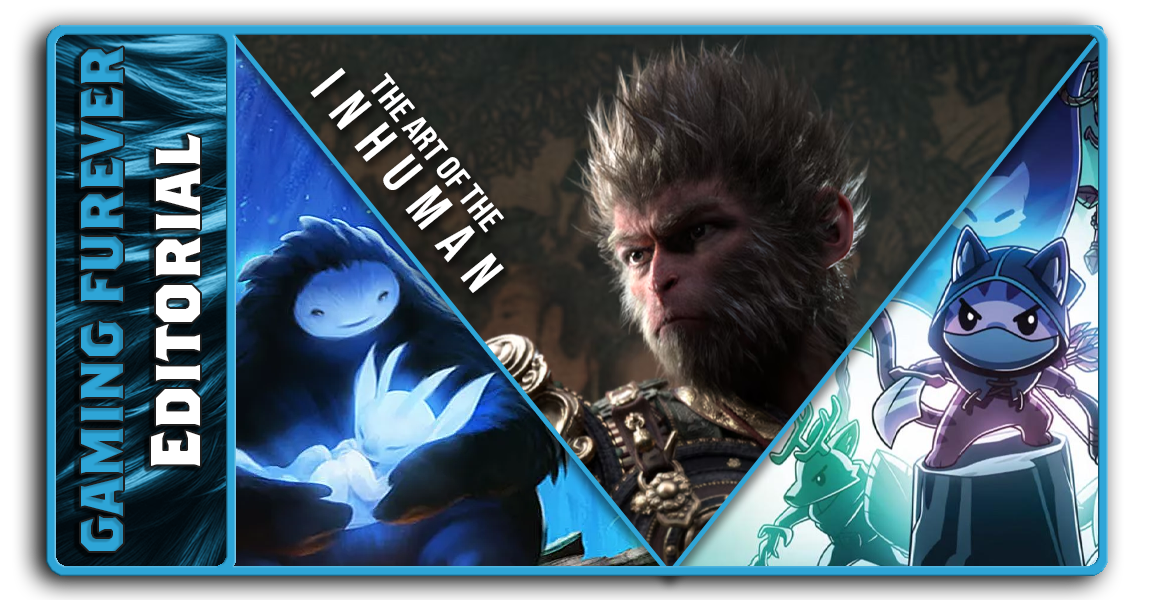Fellow beast, raise your snouts and notice a change in the gaming landscape. Once dominated primarily by human characters, the gaming ecosystem is booming with projects where the protagonists are quadrupedal animals, anthropomorphic animals, or monsters. We’re surviving in a Rain World, preserving the young of the Endling: Extinction is Forever, in competitions where Friends vs Friends, leading cults like the Cult of the Lamb, leading nations in an Age of Wonders, and reclaiming a kingdom through Tails of Iron. These stories are depicted through simple hand-drawn art, abstract lighting, stop motion, and fully rendered 3D environments. Beast races are making a return, not simply as niche characters, but as epics, expanded upon and featured as the main characters of mythological stories, like in Black Myth: Wukong.
(Black Myth: Wukong)
This wild revolution’s spurred by the independent development on PCs. As developer tools become more comprehensive, making production of games by small studios easier, developers are looking for ways to stand out with their IPs. The use of an animal character is one way a game can establish a presence among the plethora of survival games, shooters, rpgs and strategy games. I still remember when Ori and the Blind Forest was announced at E3, sharing a tale of a lost tree sprite, raised by an adopted mother, only to lose her to starvation as the forest starts dying. The dark world illuminated by a little sprite, with a snout, hooved feet, a long tail, short horns and pointy ears becoming illuminated by hundreds of tiny lights on the screen and in the theater was gorgeous and stuck with people.
(Ori and the Blind Forest)
Some of the most impressive examples of anthropomorphic characters are in an upcoming game from Chinese developer Combat Cat Studios, and their game Wild Assault. It’s a 3rd person shooter whose entire roster is animals. Many devs would be satisfied simply by making animal models and developing a standard movement cycle. Wild Assault’s characters move like the animals they’re modeled after. Jack the wolf has that familiar quadruped sprint we see in wolves, while Hongying the rabbit hops as she sprints, and Vladamir the bear’s sprint embodies the full lumbering power of a brown bear. Each character has a different sprint animation that makes them fall on all fours and move like their animals. Even though its world’s an alternate reality of Earth, their unique species-based movement is akin to the fantasy of being a were-beast.
Where Wild Assault envisioned a civilization made of anthropomorphic beasts, in Rain World you play a slug cat, a primitive creature in a fallen civilization. You’re low on the food web and while you’re crawling through ruins for food and your missing family, you have to survive the diverse creatures and hazardous environment. You watch territorial disputes, learn behavior patterns, recognize camouflage predators, and learn how to handle or evade them. Playing the game you feel like a wild creature, your only knowledge tools is to pick up and throw things.
(Rain World)
Anthro characters aren’t simply appearing more in video games. Several tabletop games have become popular in the last decade, set in worlds filled with scaled, furred, feathered, and slippery beasts. Leder Games, Root is a popular tabletop asymmetrical strategy game where different animal factions try to win control of the woods, by accomplishing the objectives. I became familiar with Unstable Game’s cute but grim creatures from their game Here to Slay, but they’ve made multiple games with their adorable creatures, including Casting Shadows. Games I own with anthro characters include Tiny Epic Tactics, Wander The Cult of Barnacle Bay, and recently Defenders of the Wild.
(Casting Shadows)
 Tabletop RPGs saw a resounding increase in popularity in recent years thanks to Critical Roll and Stranger Things, with several celebrities admitting they played games like Dungeons and Dragons in the past. As a player who’s always sniffing around for ways to make anthro characters, my eyes are always drawn to books that include beast races. One book that became exceptionally popular with a robust community, was the Delvers Guide to Beast World, which comes with 18 species, most consisting of 2 subspecies, with many of these species having unique adaptations depending on which of the 5 homelands they hail from. Pathfinder has multiple beast race ancestries, including kitsune, ratfolk, lizardfolk, and gnolls. They recently released their Player Core 2 book, which consists of mostly anthro ancestries, and their Howl of the Wild book, which includes minotaurs, athamaru, and awakened animals. It also has heritages that include were-creatures and beastkin to cover different fantasies involving beastial transformations.
Tabletop RPGs saw a resounding increase in popularity in recent years thanks to Critical Roll and Stranger Things, with several celebrities admitting they played games like Dungeons and Dragons in the past. As a player who’s always sniffing around for ways to make anthro characters, my eyes are always drawn to books that include beast races. One book that became exceptionally popular with a robust community, was the Delvers Guide to Beast World, which comes with 18 species, most consisting of 2 subspecies, with many of these species having unique adaptations depending on which of the 5 homelands they hail from. Pathfinder has multiple beast race ancestries, including kitsune, ratfolk, lizardfolk, and gnolls. They recently released their Player Core 2 book, which consists of mostly anthro ancestries, and their Howl of the Wild book, which includes minotaurs, athamaru, and awakened animals. It also has heritages that include were-creatures and beastkin to cover different fantasies involving beastial transformations.
As a longtime fan of TTRPGs I lamented the lack of non-human PC and NPC character models, and then I learned of Heroforge. This model-building site allowed me to design characters I never imagined until now. I’ve designed rats, foxes, painted dogs, cats, and new species. They continue to add more items, features, and avatar parts so options to craft new, more fascinating creatures expand. I’ve designed models that could tell stories; with markings, armor, scars, and adornments. I’ve purchased digital models for games on Tabletop Simulator and Talespire, and physical models for in-person games.
(Personal Model from Heroforge)
It’s a great time to be a gamer if you love characters with fur, scales, feathers, and slimy skin. Whether you like characters with more human-like behavior or love digging holes with your paws, there’s a game for you. The future of fuzzy-filled games continues to look bright, with pixelated and high-definition animal characters in digital space, and board and card games in settings filled with beast races. If there’s something you want, where a character has a muzzle or moves like a feral creature, there’s a chance it already came out or waits on the horizon.


